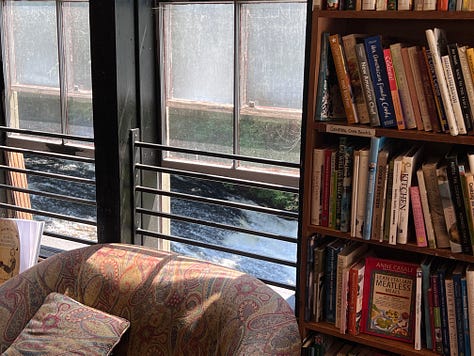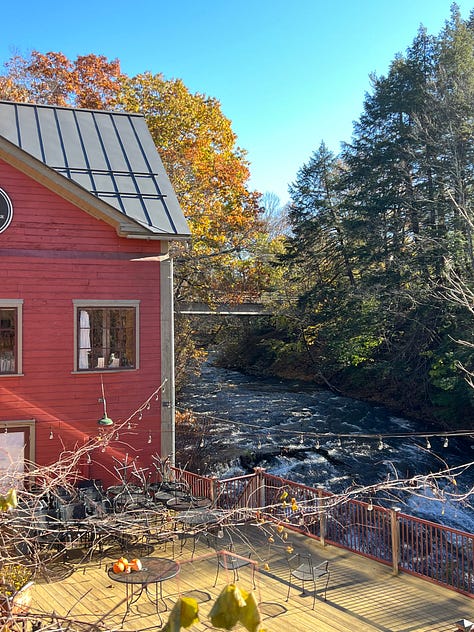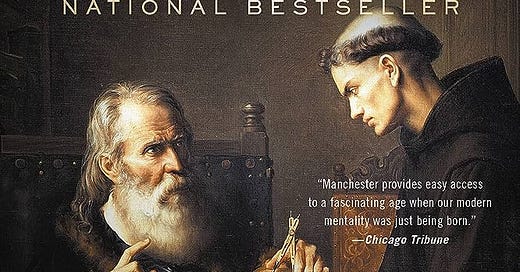For probably decades now, I’ve been aware of A World Lit Only by Fire, William Manchester’s extremely well known study of the medieval mind. The very atmospheric title phrase is even the opening phrase of a song by one of my favorite bands (Rush, don’t hate me).
I stumbled across a used copy in a book store crawl last weekend, and settled in to read.



This is a book with almost 12,000 ratings on Goodreads. 800 people are reading it now, according to Goodreads. Tom Hanks pegged it as one of his desert island books. Believe it or not, Hanks even wrote the forward of it, in a new edition. The book is a New York Times bestseller, not a bad feat for any book about the Middle Ages. It’s taught in high schools in America. And in a word, it is….
Ug. Awful.
Howlers everywhere. If you read our episode on time-telling in the medieval ages, you might be amused to read this:
In the medieval mind there was also no awareness of time, which is even more difficult to grasp. Inhabitants of the twentieth century are instinctively aware of past, present, and future. At any given moment most can quickly identify where they are on this temporal scale - the year, usually the date or day of the week, and frequently, by glancing at their wrists, the time of day. Medieval men were rarely aware of which century they were living in.
Generations succeeded one another in a meaningless, timeless blur.
Well, no. I mean, it’s ludicrous on its face, everyone can see the sun moving and know that time is passing. Yes, there were no clocks in the early middles ages (although that would change by the 14th century - oh wait nobody knew which century they lived in…sigh). But in the medieval mind there was time, and it was measured not by a clock but by the sun, sundials, hourglasses, and most importantly, the church. Matins, sext, nones, vespers, compline. And I’m pretty sure they knew when to plant crops.
Nevertheless, if value judgments are made, it is undeniable that most of what is known about the period is unlovely. After the extant fragments have been fitted together, the portrait which emerges is a mélange of incessant warfare, corruption, lawlessness, obsession with strange myths, and an almost impenetrable mindlessness.
I guess he did not read The Iliad. Or participate in trench warfare during WWI. There is no question the medieval era was violent. As mankind has been for most of our existence. Very unclear the medieval era was worse than what preceded it, or what followed it. Actually, today we live in an era of surprising peace. Oh wait. The war in the Ukraine. The endless middle east conflicts. And so on. Were the Middle Ages violent? Sure. Abnormally so compared to other eras? Less clear. What would be a more accurate statement might be that much of the “organized” violence was religiously driven, rather than geo-politically driven, but even that must be said with caveats.
The level of everyday violence - deaths in alehouse brawls, during bouts with staves, or even in playing football or wrestling - was shocking.
Well, once you take war out of the equation, things are a lot less clear. A study of murder rates in medieval London show murder rates roughly equivalent to turn-of-the-century modern society, says research.
It says much about the Middle Ages that in the year 1500, after a thousand years of neglect, the roads built by the Romans were still the best on the continent…Among the lost arts was bricklaying; in all of Germany, England, Holland, and Scandinavia, virtually no stone buildings, except cathedrals, were raised for ten centuries.
I mean, what? Rubbish.
THE MOST BAFFLING, elusive, yet in many ways the most significant dimensions of the medieval mind were invisible and silent. One was the medieval man's total lack of ego. Even those with creative powers had no sense of self. Each of the great soaring medieval cathedrals, our most treasured legacy from that age, required three or four centuries to complete.
Well, no. The utterly sublime Sainte-Chapelle in Paris was built in the 12th century in 7 years. For contrast: (as Dave Barry would say, ‘I am not making this up’), where I live in Hawaii a new roundabout 50 yards in diameter will take 3! <expletive deleted> years. Notre Dame, Westminster Abbey, these are not the works of a culture that has forgotten how to build things, and they stand today.


They even asked omnipotent God to spare communities from fire, plague, and enemy invasions.
This is hardly unique to the medieval era, is it?
In summertime peasants went about naked.
Hahahahahaha. Seriously?
The last straw for me was the map of Europe, ca A.D. 1200. The time of Richard the Lionheart. Something I now know a little about…and…there is shown the Kingdom of England, and there is shown the Kingdom of France. France is drawn with its modern-day borders, and Aquitaine, Normandy, Anjou, the entire Angevin Empire outside England, under Richard’s control is….. simply not drawn. We are to think it is apparently part of France, according to this book. It is true that Richard owed homage to King Philip for parts of his land to France, but to simply erase the Angevin Empire is a huge blunder.
And all of this is only up to page 23. I have rarely been tempted to throw a book across the room, but this book brought me close. You would be better off reading some good historical fiction, than trying to learn something of the medieval era from this book. If you want something a little more grounded and easy to read, try Ian Mortimer’s A Time Traveler’s Guide to the Middle Ages.
<Deep breath>. There. I feel better now. Thanks for listening.





